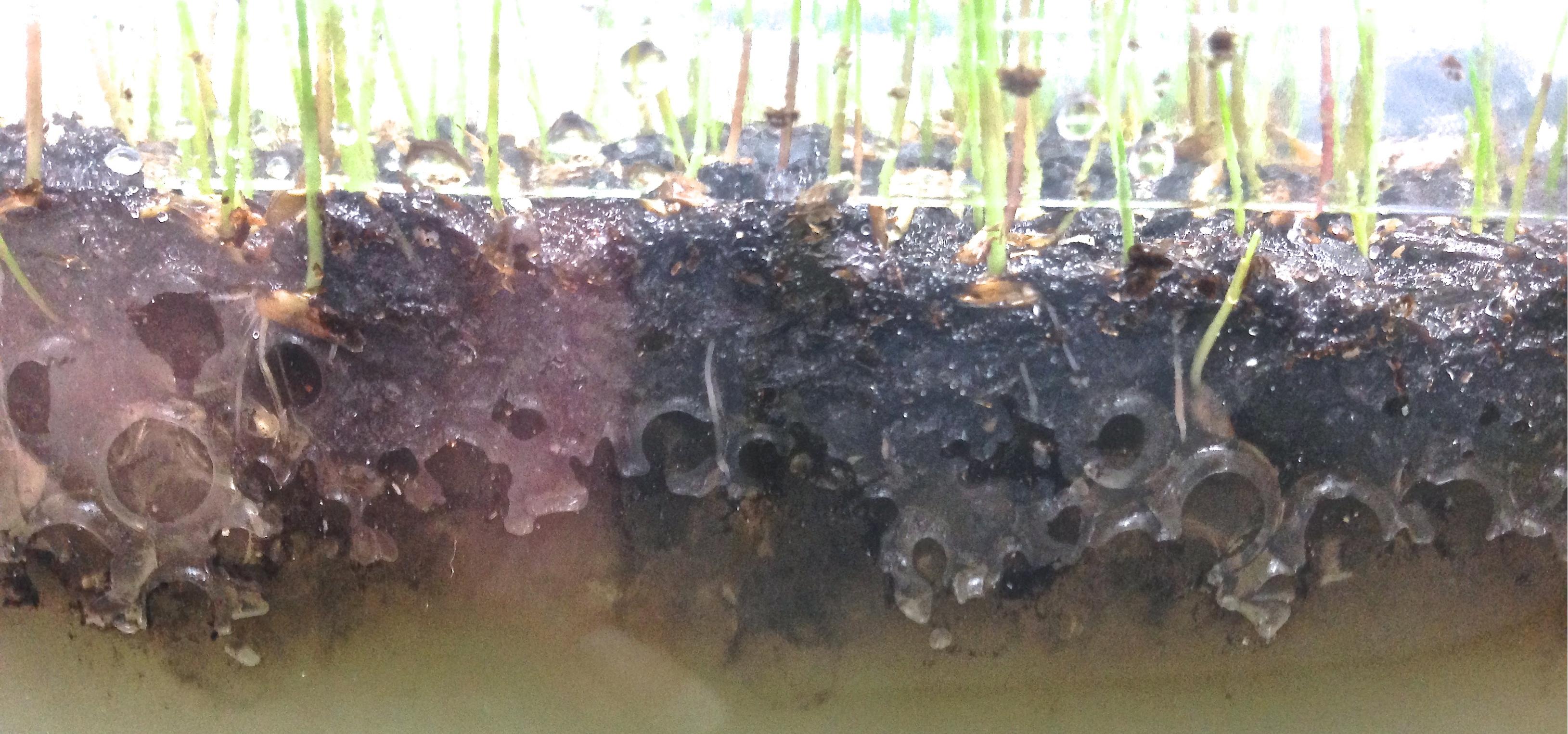Soil Mechanics Lab
Linda Dombi and Jason Econome
We are continuing or research in Prof. Iskander’s Soil Mechanics Lab. This week we enjoyed some success! The plants (Schefflera elegantissima, Dracaena reflexa) that we used to build the first few transparent soil prototypes are still standing. It’s difficult to quantify any new root growth but other indicators such as a firm stem and green, turgid leaves tells us the plants have adapted to this new environment.
These species succeeded because they possess an innate ability to grow quickly in a saturated soil. For the moment sucrose has been removed from the transparent soil formula because although it enhances transparency, raising the beads’ refractive index closer to 1.33 (H2O), it invites microbial contamination for some plants.
The nitrogen and phosphorus enriching fertilizer (0.5 g / l) and immunity-stimulating aspirin (0.2 g / l) are promoting growth in the transparent soil as the literature suggests. There’s excitement and anticipation growing around the germinating grass seeds. Their long, white roots are not only penetrating the natural topsoil but actually invading the Aquabeads! We will quantify the growing, branching roots on a daily basis.
Further we have ordered other types of water-based beads in an effort to improve transparency of the soil. We continue researching ways to incorporate fused quartz into the transparent soil experiments.
